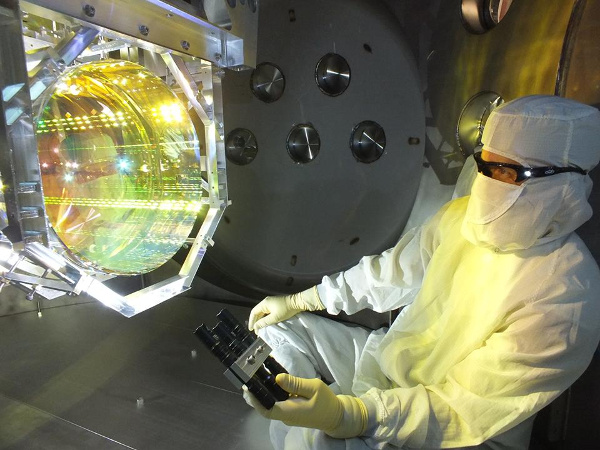India will soon begin constructing a counterpart to the LIGO gravitational-wave observatory in the United States, after the construction site for the project received final approval.
The observatory, which will cost 12.6 billion rupees (US$177 million) and is scheduled for completion in 2024, will be built in the Hingoli District of Maharashtra state in western India.
The detector will help to expand the area of sky in which gravitational waves — ripples in the fabric of space time — can be detected and help triangulate data to boost sensitivity and confidence of detection.
An Indian team of scientists has been collaborating formally on the Laser Interferometer Gravitational-Wave Observatory (LIGO) project with US scientists since 2016. In 2015, LIGO’s US detectors made the first discovery of gravitational waves — energy produced and radiated by the collision of two black holes — thereby confirming Albert Einstein’s prediction and launching a new way of studying the Universe.
The Indian gravitational-wave detector would be only the sixth such observatory in the world and will be similar to the two US detectors in Hanford, Washington, and Livingston, Louisiana.
“We can look forward to lots of exciting astronomy,” says Tarun Souradeep, a cosmologist at the Inter-University Centre for Astronomy and Astrophysics (IUCAA) in Pune, which will lead the project’s gravitational-wave science and the new detector’s data analysis.
Souradeep says that the Indian ‘advanced LIGO’ (aLIGO) is expected to help scientists to achieve three main objectives: to pinpoint the source of gravitational waves five to ten times more accurately than current efforts allow; to make accurate calculations of sizes of black holes; and to better understand the Universe’s rate of expansion.
India is conventionally strong in theoretical astronomy, says Ashutosh Sharma, secretary of India’s Department of Science and Technology. “aLIGO will help Indian astronomers partner with the global community and bring new insights into this vibrant area,” he says.
Collaborative effort
India’s Department of Atomic Energy and its Department of Science and Technology signed a memorandum of understanding with the US National Science Foundation for the LIGO project in March 2016.
Under the agreement, the LIGO Laboratory — which is operated by the California Institute of Technology (Caltech) in Pasadena and the Massachusetts Institute of Technology (MIT) in Cambridge — will provide the hardware for a complete LIGO interferometer in India, technical data on its design, as well as training and assistance with installation and commissioning for the supporting infrastructure.
India will provide the site, the vacuum system and other infrastructure required to house and operate the interferometer — as well as all labour, materials and supplies for installation.
The IUCAA plans to use the initial seed money from the Indian government of 1 billion rupees for initial land acquisition and levelling, and for improving technical skills of participating Indian astronomers. The Institute for Plasma Research in Gandhinagar and the Raja Ramanna Centre for Advanced Technology in Indore, will also be partners on the project.
Scientists expect the Indian government to release the full project funds by 2020, after the submission of the detailed project report.
Source: Nature
Image Courtesy: Telengana Today
You may also like
-
New Heat-Based Approach To Cancer Treatment Can Reduce Chemotherapy Doses
-
Scientists Take A Major Step Towards Unification Of Classical & Quantum Gravity
-
India Graphene Engineering and Innovation Centre (IGEIC) Under the Vision of Viksit Bharat@2047 Launched
-
New High-Performance Gas Sensor can Monitor Low Level Nitrogen Oxides Pollution
-
Antidepressant Drug can be Repurposed for Treating Breast Cancer
